| |
|
|
Cretaceous Shales -
Book Cliffs of Utah
Kenilworth Member of the Blackhawk Formation |
| |
|
| The Cretaceous Books
Cliffs of Utah are best known as the Mecca of sequence
stratigraphers, but besides excellent exposures that allow tracing
of sandstone bodies and sequence boundaries the succession also
contains abundant shales and mudstones. Because of the excellent
stratigraphic control, we studied shales in the Kenilworth Member of
the Blackhawk Formation to examine proximal to distal changes of
shale facies. |
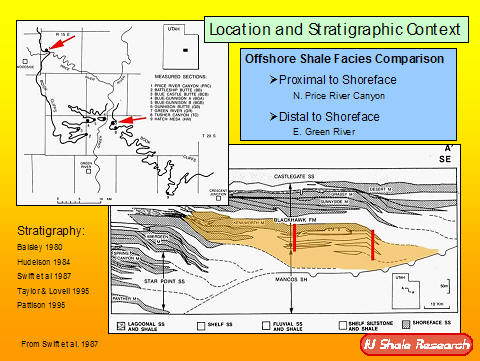 |
For an onshore - offshore facies
comparison, two well exposed sections (red bars) of the Kenilworth
Member (orange shading) were studied in detail. |
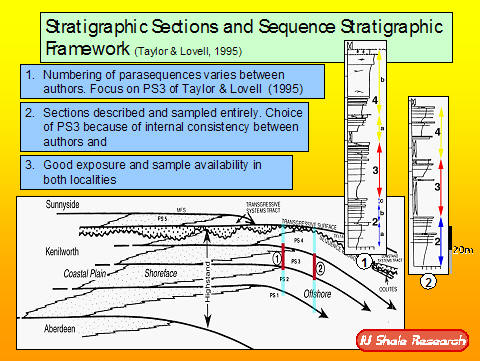 |
Stratigraphic sections show
multiple coarsening/shallowing upwards packages, the parasequences
of the Kenilworth. Although all parasequences were examined, we
illustrate PS3 because of good exposures between the two sampling
localities. |
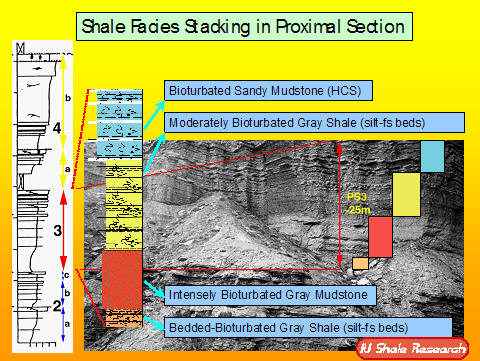 |
In proximal settings a systematic
stacking of four types of shale facies is observed. These are
briefly described below. |
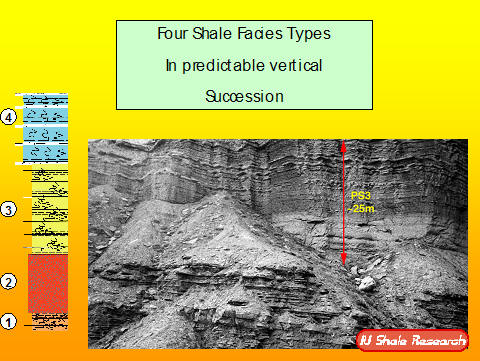 |
see slide |
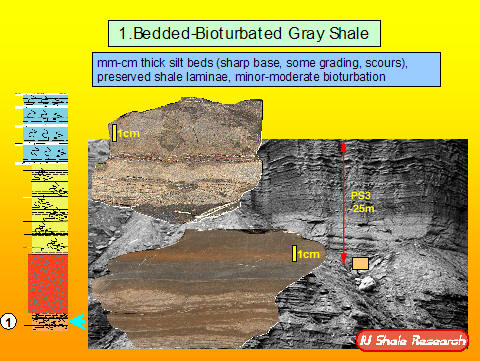 |
At the bottom of the "stack" we
have shales with well preserved bedding and some bioturbation.
Primary bedding is typically well visible in cut slabs. |
 |
The next higher unit is an
intensely bioturbated mudstone (burrow mottling is prevalent
texture) with little if any of the primary bedding preserved. |
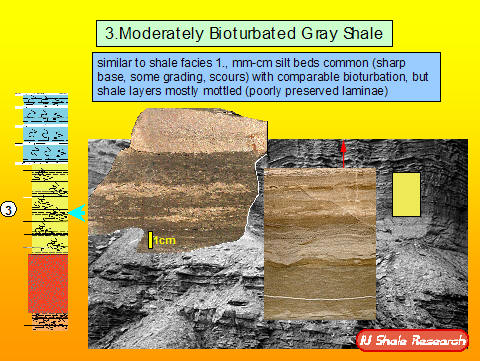 |
The following shale package shows
better preservation of primary bedding and proportionally less
bioturbation. Probably due to higher rates of deposition. |
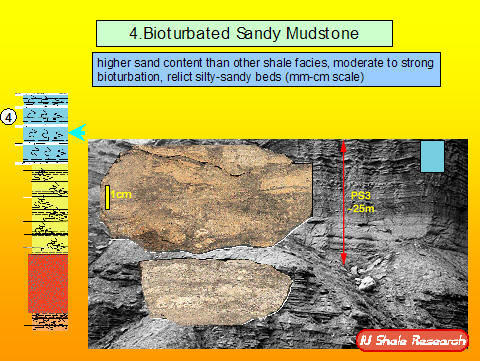 |
The topmost facies is the most
sandy and more seriously bioturbated than the underlying shales/mudstones.
Probably a reflection of proximity to shoreline and shallow water. |
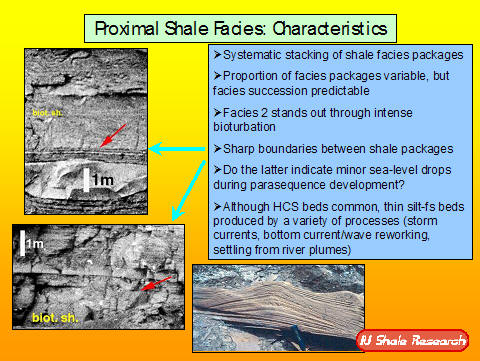 |
Sharp boundaries between facies
packages suggest minor sea-level drops during parasequence
development. Abundant thin storm produced beds (silt/sand layers,
graded silt-mud couplets) in addition to hummocky cross-stratified
sandstone beds of storm origin. |
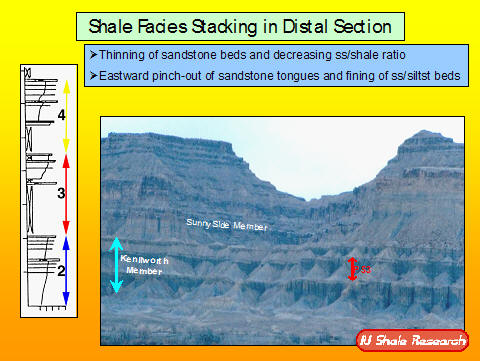 |
In distal section we see fewer
facies developed within parasequences, and there is a higher
proportion of mudstone in the section (sandstones are piching out in
down-dip directions). |
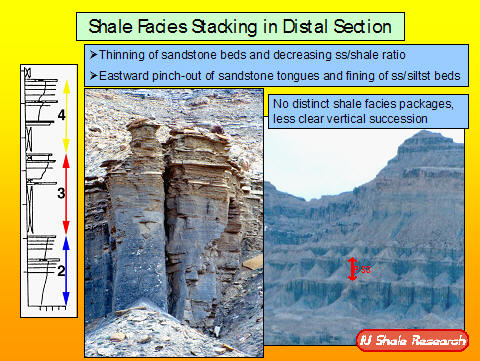 |
see above and left |
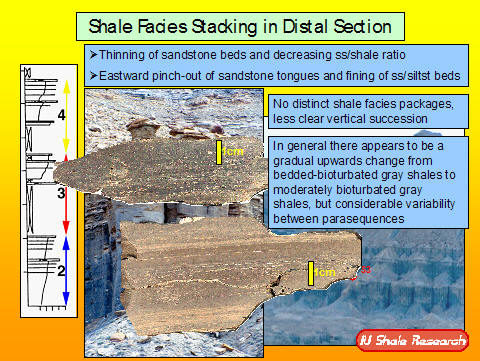 |
see slide at left |
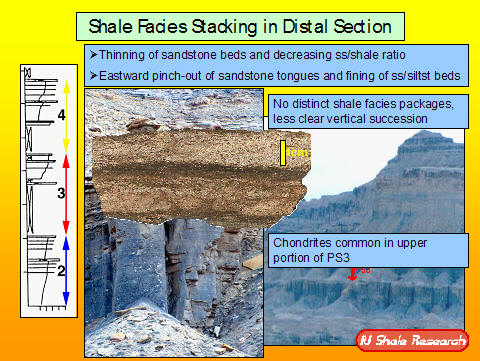 |
see slide at left |
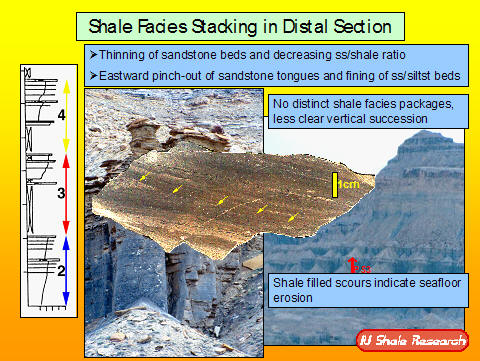 |
These shales/mudstones were
deposited tens of kilometers offshore, and presumably in deeper
water. Yet, careful examination of hand specimens shows
shale-on-shale scours and erosion surfaces. |
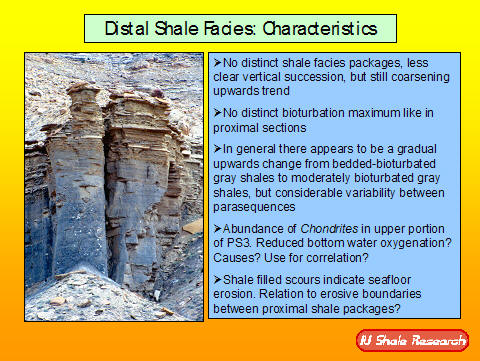 |
see slide at left |
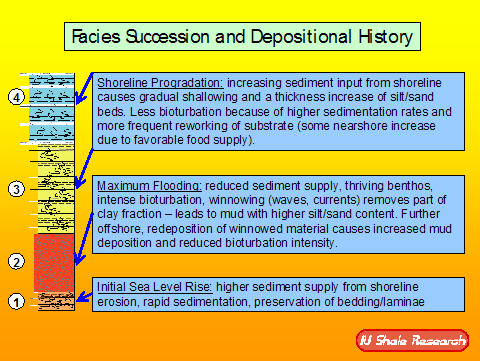 |
The shale facies succession in
proximal section reflects the sedimentary response to initial sea
level rise, maximum flooding, and shoreline progradation. |
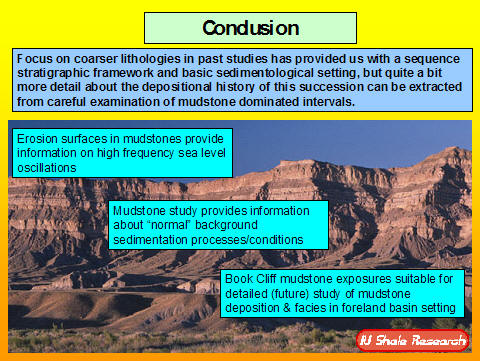 |
Although somewhat more
bioturbated than comparable Devonian mudstones, the information
distilled from Cretaceous shales still enhances our understanding of
the succession. We see more in detail what "background"
sedimentation was like, and realize that storms of all sizes were
involved in building this succession. |
| |
|
| |
|


















